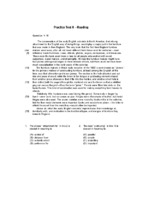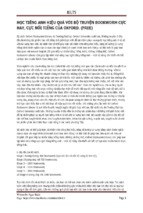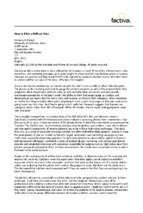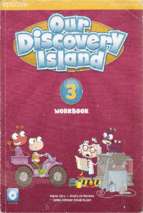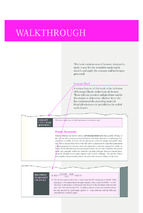TEAM PLANNING
FOR PROJECT
MANAGERS AND
BUSINESS ANALYSTS
Gail Levitt
TEAM PLANNING
FOR PROJECT
MANAGERS AND
BUSINESS ANALYSTS
ESI International Project Management Series
Series Editor
J. LeRoy Ward, Executive Vice President
ESI International, Arlington, Virginia
Team Planning for Project Managers and Business Analysts
Gail Levitt • 978-1-4398-5543-0
Practical Project Management for Building and Construction
Hans Ottosson • 978-1-4398-9655-6
Project Management Concepts, Methods, and Techniques
Claude H. Maley • 978-1-4665-0288-8
PgMP® Exam: Practice Test and Study Guide, Third Edition
Ginger Levin, and J. LeRoy Ward
978-1-4665-1362-4
Program Management Complexity: A Competency Model
Ginger Levin, and J. LeRoy Ward
978-1-4398-5111-1
Project Management for Healthcare
David Shirley • 978-1-4398-1953-1
Managing Web Projects
Edward B. Farkas • 978-1-4398-0495-7
Project Management Recipes for Success
Guy L. De Furia • 978-1-4200-7824-4
A Standard for Enterprise Project Management
Michael S. Zambruski • 978-1-4200-7245-7
Determining Project Requirements
Hans Jonasson • 978-1-4200-4502-4
The Complete Project Management Office Handbook, Second Edition
Gerard M. Hill • 978-1-4200-4680-9
Other ESI International Titles Available
from Auerbach Publications, Taylor & Francis Group
PMP® Challenge! Fourth Edition
J. LeRoy Ward and Ginger Levin • 978-1-8903-6740-4
PMP® Exam: Practice Test and Study Guide, Seventh Edition
J. LeRoy Ward • 978-1-8903-6741-1
The Project Management Drill Book: A Self-Study Guide
Carl L. Pritchard • ISBN: 978-1-8903-6734-3
Project Management Terms: A Working Glossary, Second Edition
J. LeRoy Ward • ISBN: 978-1-8903-6725-1
TEAM PLANNING
FOR PROJECT
MANAGERS AND
BUSINESS ANALYSTS
Gail Levitt
PMBOK® Guide, PMI®, Project Management Institute®, and PMP® are registered trademarks of the Project Management Institute.
CRC Press
Taylor & Francis Group
6000 Broken Sound Parkway NW, Suite 300
Boca Raton, FL 33487-2742
© 2013 by Taylor & Francis Group, LLC
CRC Press is an imprint of Taylor & Francis Group, an Informa business
No claim to original U.S. Government works
Version Date: 20120713
International Standard Book Number-13: 978-1-4398-5544-7 (eBook - PDF)
This book contains information obtained from authentic and highly regarded sources. Reasonable
efforts have been made to publish reliable data and information, but the author and publisher cannot
assume responsibility for the validity of all materials or the consequences of their use. The authors and
publishers have attempted to trace the copyright holders of all material reproduced in this publication
and apologize to copyright holders if permission to publish in this form has not been obtained. If any
copyright material has not been acknowledged please write and let us know so we may rectify in any
future reprint.
Except as permitted under U.S. Copyright Law, no part of this book may be reprinted, reproduced,
transmitted, or utilized in any form by any electronic, mechanical, or other means, now known or
hereafter invented, including photocopying, microfilming, and recording, or in any information storage or retrieval system, without written permission from the publishers.
For permission to photocopy or use material electronically from this work, please access www.copyright.com (http://www.copyright.com/) or contact the Copyright Clearance Center, Inc. (CCC), 222
Rosewood Drive, Danvers, MA 01923, 978-750-8400. CCC is a not-for-profit organization that provides licenses and registration for a variety of users. For organizations that have been granted a photocopy license by the CCC, a separate system of payment has been arranged.
Trademark Notice: Product or corporate names may be trademarks or registered trademarks, and are
used only for identification and explanation without intent to infringe.
Visit the Taylor & Francis Web site at
http://www.taylorandfrancis.com
and the CRC Press Web site at
http://www.crcpress.com
Dedication
It takes great imagination for project professionals to develop teams to
reach their true potential. The practical constraints of deadlines, budget,
and scope can easily demand their full attention to focus on project deliverables in the present and rob them of important time needed to plan for
the team’s future. Even so, there are individuals with the vision and the
drive to succeed as team developers. I know them as the bright lights of the
20,400 project managers and business analysts I have instructed, coached,
and mentored since 1995. These are the individuals who stood out to me
in the crowd as determined to develop their teams systematically to function more productively in their organizations. Whether or not they had
formal authority over the teams they wanted to develop, these individuals shared two important characteristics: understanding the importance
of creating, implementing, and communicating a team development plan
while also lacking the knowledge and resources to develop their teams
efficiently and effectively.
This book is dedicated to these project professionals; they already have
the imagination and just need the tools, tips, and templates to achieve their
visions. I would like to acknowledge the following people who inspired me
at every step in the book writing process:
George Geniev, visionary thinker
Marilyn Levitt, role model
Karen Morris, team mediator
Rod Landgraff, strategic mentor
Phyllis Harber-Murphy, editor and administrator extraordinaire
v
Contents
Foreword.............................................................................................. xiii
Introduction........................................................................................... xv
About the Author.................................................................................xvii
Chapter 1 Team Planning in a Project Environment......................... 1
Stereotype of Team Planning......................................................1
Truth about Team Planning........................................................5
Visionary...................................................................................5
Methodical................................................................................8
Observant..................................................................................9
IQ—Intellectual Ability...................................................10
EQ—Emotional Ability....................................................11
Team Planning Skills.................................................................12
Summary: Key Ideas..................................................................13
Chapter 2 Evaluating the Team......................................................... 15
Team Life Cycle...........................................................................15
Five Team Stages: Task and Relationship Focus................16
Observing Team Strengths and Gaps............................17
Observing Teams in Conflict....................................................18
Conflict Levels and the Team Stages...................................19
Forming Teams: Hidden and Emerging Conflict........19
Storming Teams: Emerging and Active Conflict.........19
Norming Teams: Active Conflict and Aftermath....... 20
Performing and Adjourning Teams: All Four Levels.... 20
Identifying Team Stages: Art and Science..............................21
STARS® Method.....................................................................21
STARS®...............................................................................22
Summary: Key Ideas................................................................. 30
Team Life Cycle..................................................................... 30
Team Stages........................................................................... 30
STARS® Method.................................................................... 30
vii
viii • Contents
Chapter 3 Creating a Team Development Plan................................ 33
Protecting Your Project Assets................................................ 34
Team Development Plan: What Is It?......................................35
Team Development Plan Components...............................36
Team Vision.......................................................................37
Determining the Team Mission..................................... 40
Setting Team Goals...........................................................41
Identifying Team Deliverables........................................41
Team “SWOT” Analysis...................................................41
Performance Indicators................................................... 42
Team Performance Action Plan......................................45
Summary: Key Ideas..................................................................52
Team Development Plan.......................................................52
Chapter 4 Getting Buy-In for the Team Development Plan............ 55
“Selling” the Team Development Plan: Challenges
and Opportunities..................................................................... 56
External Obstacles.................................................................57
Internal Obstacles..................................................................57
Gaining Buy-In and Commitment: The Process...................58
Tips for Influencing Upward................................................... 60
Tips for Influencing Team Members.......................................62
Influencing Team Members: Communication Guidelines.....63
Providing Continuous Reinforcement...............................63
Modeling the Plan......................................................................65
Summary: Key Ideas..................................................................67
Concept of “Selling” the Team Development Plan.............67
Influencing Successfully.......................................................67
Modeling the Team Development Plan..............................67
Chapter 5 Influencing Multigenerational Team Members.............. 69
Teamwork: A Multigenerational Concept..............................70
Multigenerational Characteristics...........................................71
Matures...................................................................................71
Cultural Experiences........................................................72
Work Values.......................................................................73
Contents • ix
Work Strengths.................................................................73
Baby Boomers.........................................................................73
Cultural Experiences........................................................74
Work Values.......................................................................74
Work Strengths.................................................................75
Generation Xers.....................................................................75
Cultural Experiences........................................................75
Work Values.......................................................................76
Work Strengths.................................................................76
New Millennials.....................................................................77
Cultural Experiences........................................................77
Work Values.......................................................................78
Work Strengths.................................................................79
Team Leadership Preferences...............................................79
Tips for Engaging Each Generation................................... 80
Engaging Matures............................................................ 80
Engaging Baby Boomers..................................................81
Engaging Generation Xers...............................................81
Engaging New Millennials..............................................82
Generational Alliances and Conflicts.....................................82
Multigenerational Alliances............................................82
Multigenerational Conflicts........................................... 84
Building Multigenerational Collaboration.............................85
Summary: Key Ideas................................................................. 86
The Generations.................................................................... 86
Team Leadership Preferences.............................................. 86
Building Multigenerational Collaboration....................... 86
Multigenerational Leadership Essentials...........................87
Chapter 6 Facilitating Team Development at Meetings................... 89
Facilitation Power...................................................................... 90
Facilitating as a Process.............................................................91
Leading versus Facilitating Meetings.................................92
Creating Ground Rules..............................................................92
Sample Ground Rules...........................................................94
Enforcing Ground Rules.......................................................94
Facilitator Competencies......................................................94
x • Contents
Managing Expectations...................................................95
Appealing to Styles...........................................................97
The Four Ds............................................................................98
Discussing:.........................................................................98
Debating:............................................................................98
Deciding:........................................................................... 99
Debriefing:........................................................................ 99
Questioning and Listening.................................................. 99
Open Questions............................................................... 99
Closed Questions........................................................... 100
Clarifying Questions..................................................... 100
Keeping Others Focused.....................................................102
Transitions.......................................................................102
Internal Previews............................................................102
Internal Summaries........................................................102
Signposts..........................................................................103
Building Collaboration.......................................................103
Managing Resistance and Conflict...................................104
Guidelines for Managing Conflict responses.............104
Summary: Key Ideas................................................................105
Facilitating at Meetings: An Essential Team
Development Skill................................................................105
Chapter 7 Team Succession Planning............................................. 107
Evaluating the Team “Brain” of Knowledge.........................107
Team “Brain Drain”.................................................................111
Guidelines for Team Knowledge Transfer.......................112
To Do................................................................................112
To Avoid...........................................................................113
Knowledge Transfer Methods................................................114
Creating a Team Succession Plan...........................................115
Team Succession Plan Components..................................116
Summary: Key Ideas................................................................117
Team “Brain” of Knowledge...............................................117
Knowledge Transfer Guidelines........................................117
Knowledge Transfer Methods............................................117
Creating a Team Succession Plan......................................118
Contents • xi
Chapter 8 Leading Team Transformation....................................... 119
Transforming Teams at a Project Level................................ 120
Leading Transformation: What Is Required?...................... 120
Supporting the Vision.........................................................121
Communicating the Team Vision.................................... 122
Focusing Teams on the Vision..................................... 122
Benefits of a Transformational Team............................... 124
Drawbacks for Teams Undergoing Transformation.......125
Team Skills Needed for Transformation..........................125
Leading Team Transformation: Best Practices................127
Why Teams Lose Their Transformative Powers............. 128
Summary: Key Ideas................................................................129
Transforming Teams: Best Practices.................................129
Chapter 9 Future of Teams............................................................... 131
Necessity for Team Development Planning..........................132
From “Soft” to “Essential”.......................................................132
Changes in Project Team Membership................................ 134
Trends for PMs and BAs..........................................................136
From Project Specialists to Business Generalists............136
From Office to Home..........................................................136
From Left Brain to Whole Brain.......................................137
Becoming More Entrepreneurial.......................................137
Becoming Relationship Managers.....................................138
Coaching Peers.....................................................................138
Managing Upward...............................................................139
Demonstrating Career Resiliency.....................................139
Summary: Key Ideas................................................................140
Future of Team Development Planning...........................140
Appendix.............................................................................................. 141
A.1 PM and BA Team Planning Competency
Assessment.....................................................................142
A.2 Observing Team Behaviors: Checklist........................144
A.3 Team Conflict Observation Guide..............................146
A.4 Identifying Team Stages Using STARS®.....................149
A.5 Team Development Plan Template..............................158
xii • Contents
A.6 Team Performance Action Planner.............................162
A.7 Selling the Team Development Plan: Influencing
Conversation Template.................................................165
A.8 Communicating the Team Development Plan:
Checklist.........................................................................166
A.9 Modeling the Team Development Plan......................168
A.10 Leading Multiple Generations on Teams:
Comparison Chart.........................................................169
A.11 Building a Stronger Multigenerational Team:
Checklist...................................................................171
A.12 Facilitating Team Development at Meetings.............173
A.13 The 4Ds Planning Template.........................................175
A.14 Building Team Collaboration Checklist.....................176
A.15 Team Meeting Facilitation Best Practices Checklist.....177
A.16 Team Stages and Activity Goals..................................178
A.17 Team Competency Needs.............................................179
A.18 Evaluating the Team “Brain” of Knowledge:
Checklist.........................................................................180
A.19 Team Transformation Guidelines................................184
A.20 Team Transformation Skill Development Planner.....186
A.21 Team Succession Planning Template...........................189
A.22 Preparing for the Future: Team Development
Checklist.........................................................................191
Selected Bibliography.......................................................................... 193
Foreword
Through team work, ordinary people can produce extraordinary results.
They can lift things that come into their hands a little higher; a little further
on toward the heights of excellence.
—Henry Ford
Today, most businesses face the challenges of tough global competition,
economic uncertainties, and limited access to personnel with the appropriate mix of skills, experiences, and cultural diversity to complete projects
successfully. Their survival and growth in this competitive marketplace
will depend on how effectively they manage their people, not just individually, but in teams—the backbone of project management. It is well recognized that teamwork leads to higher performance, especially when projects
require agility, multidisciplinary skills, and appropriate judgments to operate within time and budget constraints. The effective management of these
human resources is vital for creating high-performance teams.
A high-performance team is an energetic group of people committed to
achieving a common vision and clear objectives, interdependent on one
another, working well together, sharing responsibilities, and producing
high-quality results. The success of projects, and hence the entire organization, depends upon the quality of the team’s work. It is important to combine the appropriate level of resources with sufficient management support
to do team planning because, as the saying goes, “if you fail to plan, you
plan to fail.”
Developing project teams to reach their fullest potential through effective teamwork is an essential leadership skill with many complexities.
Team members are likely to be cross-cultural, geographically dispersed or
virtual, multi-generational, possessing different backgrounds, skills and
experiences, and working internally, externally, or contractually. All of
these factors require effective team planning to lead the team to develop to
a level of extraordinary performance. Team leaders must understand team
dynamics, grasp the concept of shared responsibility and accountability,
and foster synergy through effective team planning.
In this unique book Team Planning for Project Managers and Business
Analysts, Gail Levitt has done excellent work explaining the importance of
xiii
xiv • Foreword
a systematic process for team planning according to specific performance
measurements. Dr. Levitt has provided practical tools and templates that will
guide project managers and business analysts in establishing and communicating team operating norms and processes, setting milestones, creating a
team vision, and writing a comprehensive team development plan.
This book also offers useful tips and ideas for how to get “real” buy-in for
the team development plan from team members and senior management.
It emphasizes the importance of developing multi-generational teams that
work constructively together, and creating a team succession plan for the
benefit of organizational longevity.
The many templates and guidelines presented in Team Planning for Project
Managers and Business Analysts will help leaders, project managers, and
business analysts across all industries gain management’s support and command the resources necessary to plan their teams’ development to achieve
high performance and superior results through effective team collaboration.
Vijay K. Verma, PMI Fellow, PMP, MBA, P.Eng.
Manager, Project Management Services, TRIUMF (Canada’s National
Research Library located at University of British Columbia)
Author of the following books:
Organizing Projects for Success
Human Resource Skills for the Project Manager
Managing the Project Team
Vancouver, BC, Canada
Introduction
Over the years, project leaders I have trained, coached, and mentored have
asked me where they can find templates for a team development plan.
Frustrated because they could not find any in their own fields of project
management and business analysis, they hoped that I could tell them where
to look for some. I was also unsuccessful in my search. So I decided to
�create some especially for them. After testing and perfecting team development plan templates appropriate for most busy project managers (PMs) and
business analysts (BAs), these team leaders encouraged me to make these
tools available to a broader base of their professional peers and include
other strategic and tactical team planning resources they found useful.
Team Planning for Project Managers and Business Analysts is the result of
these efforts. Project professionals seeking practical guidelines, tips, tools,
and templates for developing teams will find them in this book. All of
the resources apply to diverse teams of two or more people �colocated;
�geographically dispersed or virtual; crosscultural and �crossgenerational;
formed recently or years before; functional, crossfunctional, or project
based; staffed by members working fulltime, parttime, and by contract;
and working in offices, on sites, or from home. The contents are designed
for use by experienced or inexperienced individuals having full, partial,
or no formal authority to lead team members, including project coordinators, project managers, business analysts, team leaders, subject matter
experts, sponsors, consultants, vendors, and other project team �partners.
Team Planning for Project Managers and Business Analysts focuses
on team planning as a deliberate, systematic process dedicated to establishing and communicating performance guidelines and milestones for
leading the team through the stages of its life cycle. It provides essential
knowledge and resources that project professionals need to develop teams
�successfully. This covers:
•
•
•
•
•
Team Planning as a Mindset
STARS® Team Assessment Method
Team Development Plan
Creating the Team Vision
Team “SWOT” Analysis
xv
xvi • Introduction
•
•
•
•
•
•
Getting Buy-In for the Team Development Plan
Developing Multigenerational Teams
Facilitating Team Development at Meetings
Team Succession Plan
Leading Team Transformation
The Future of Team Planning
Each chapter begins with a real-life project scenario, highlights essential
concepts and tips pertinent to each topic, and ends with a summary of key
points. The Appendix contains essential team planning templates created
especially for project professionals to enhance their efficiency and effectiveness. Recommended books and websites most appropriate for project
professionals to increase their team development skill competencies are
listed in the Selected Bibliography at the end of the book.
Effective team planning is a core skill for effective team leadership.
I hope this book gives project leaders the support and resources they need
to plan their teams’ development proactively to achieve performance goals
more productively.
Dr. Gail Levitt
About the Author
Gail Levitt, Ph.D., is a knowledgeable
leadership strategist, facilitator, and
coach dedicated to developing global
leaders and their teams to perform more
efficiently and effectively. She provides a
unique perspective as a former marketing administrator, business development
strategist, product manager, project
team leader, and corporate consultant.
Levitt is president of Levitt Communications Inc., a corporate service organization offering courseware, templates
and tools, training, and consulting in
leadership communications, especially
related to team problem solving, conflict management, collaboration, and
influence. Previously, she worked for twenty years for leading organizations
in publishing, packaged goods, computers, education, and government,
resulting in extensive expertise in leadership and team development pitfalls and best practices. She has spoken extensively at conferences on project
management, business analysis, customer service, and team development
and has �written articles on team leadership issues for professional publications. The recipient of numerous awards for poetry, she has also presented
academic papers at the International Conference on the State of Mark Twain
Studies at Elmira �College for three consecutive years.
Gail Levitt holds a doctorate in cultural studies from the University of
Exeter in England. She also earned a master’s degree with high honors
in English from the University of Illinois in Urbana-Champagne, and a
Â�bachelor’s degree in English from Hobart and William Smith Colleges in
Geneva, New York, graduating summa cum laude.
xvii
1
Team Planning in a Project Environment
George, BA (Business Systems Analyst): “Hi, Carol. I’m looking forward
to your requirements presentation at the project update meeting
tomorrow.”
Carol, PMP (Project Team Leader): “Well, as a matter of fact, I’m not
going, but don’t worry—you will receive the information you
need from Henry who will be presenting instead.”
George: “O.K., that’s acceptable, but why are you going to miss the
meeting?”
Carol: “The project sponsor is requiring me to attend a ‘team planning’
course for the next two days. I tried to postpone this training due
to my workload, but I was unsuccessful.”
George: “So while we are completing important project work priorities,
you will be having fun doing silly team-building games and
learning fluffy, touchy-feely stuff. You are really lucky to have it
so easy!”
Carol: “I don’t feel so lucky wasting my time and energy when I have
so much real work to do, but I don’t have a choice. I just hope
there is a quiet location outside the room where I can disappear
frequently to check messages for project updates.”
STEREOTYPE OF TEAM PLANNING
In the above dialogue, George and Carol define team planning as a
touchy-feely activity identical to team building that interferes with more
important project tasks. Have you ever heard or participated in a similar
conversation that stereotypes team building and development processes
1
- Xem thêm -



